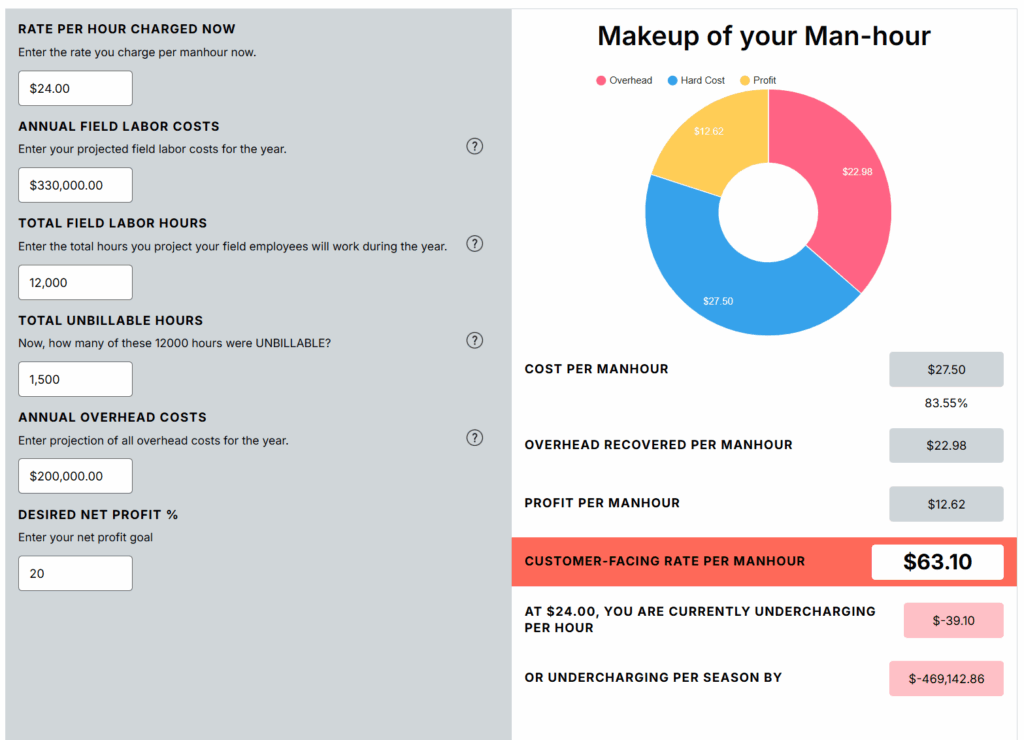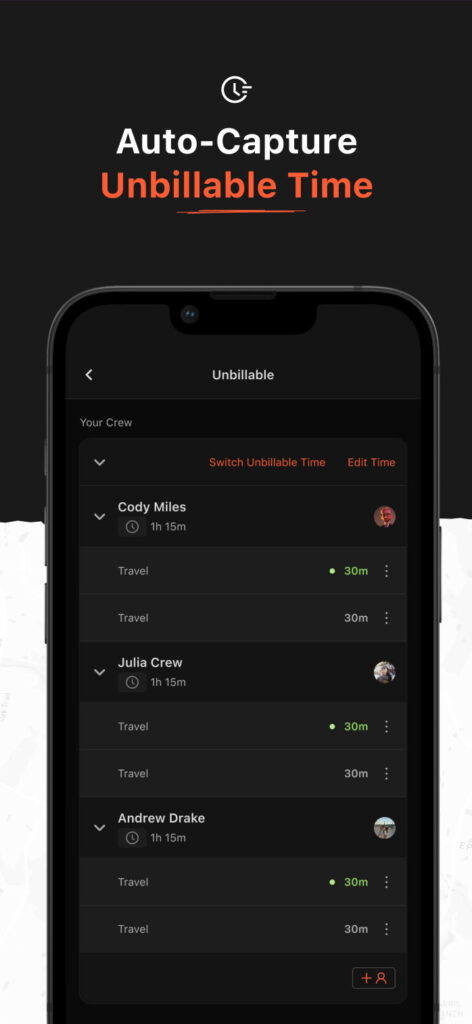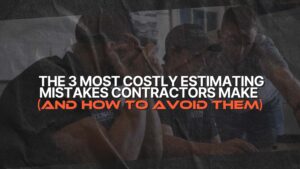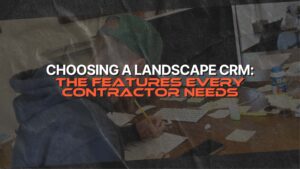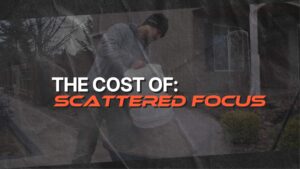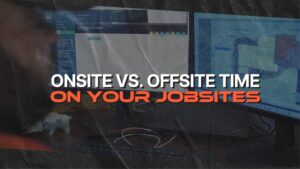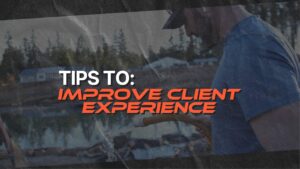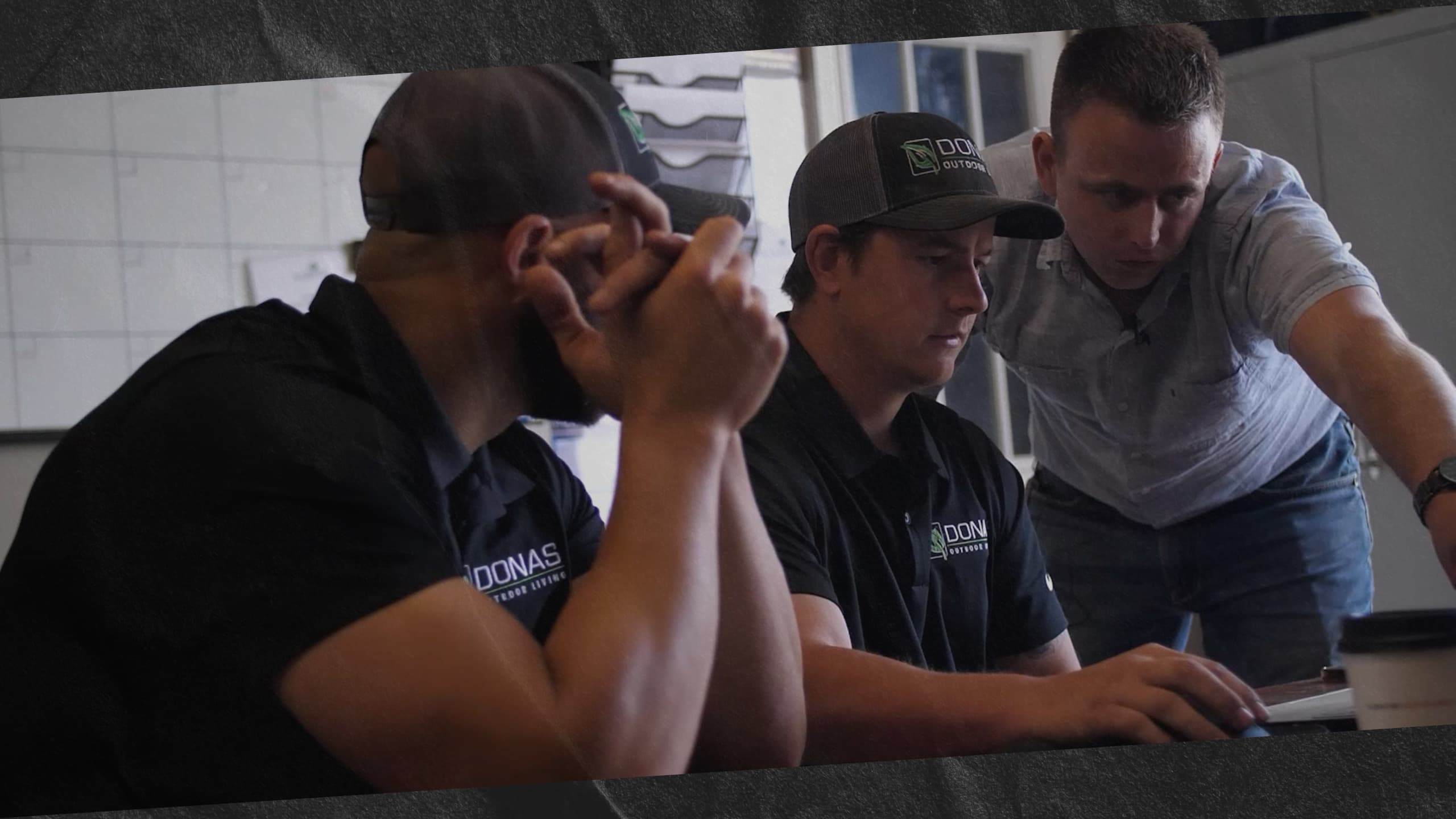
The 3 Most Costly Estimating Mistakes Contractors Make (And How to Avoid Them)
Estimating isn’t just about plugging numbers into a spreadsheet and hoping the job goes well. It’s the difference between a profitable season or a cash-crunch come winter. And let’s face it: for most contractors, estimating feels more like gut-feel than math.
Whether you’re building patios, maintaining lawns, or installing hardscapes, your estimate sets the tone for the entire job. But most contractors are unintentionally lowballing estimates and over-promising timelines because of a few avoidable mistakes. These small missteps in estimating lead to blown budgets, unpaid time, and ultimately, profit loss.
That’s why more landscapers are leaning on tools like landscape business management software to avoid common pitfalls. This guide will walk you through the 3 biggest estimating mistakes contractors make (yes, even the seasoned ones), why they happen, how much they’re costing you, and exactly how to fix them.
Mistake # 1: Estimating in Partial Day Chunks
The Problem:
Breaking jobs down into “half days” or “2.5 days” might feel precise, but it wrecks your profitability. You don’t just have to cover payroll for that half day—you still have to cover a full day’s worth of overhead (rent, insurance, equipment payments, landscaping crm software, etc.).
And once your crew leaves the job site at 1 PM, it’s too late to mobilize them on another project to earn the remaining revenue. The half day you estimated becomes a full day of expense without a full day of income.
Real World Example:
Say you estimate 165 man‑hours. You have a crew of 3 working 10 hours/day → 30 man‑hours/day. That’s 5.5 days of work.
If you bid 5.5 days, your client expects 5½ days.
But what happens during that “half day”?
- your crew might leave the job site at noon, but they’re not done for the day…technically. They’re probably heading back to the shop, cleaning tools, unloading materials, or prepping for the next job. You’re still paying them, so why aren’t those hours showing up in your estimates?
- In addition to that your overhead (rent, insurance, landscape estimating software, etc.) doesn’t shrink during that half day. The revenue earned during that half day won’t fully cover the overhead that was expected to be spread over a full day.
The Result:
Every time you estimate partial days, you eat the difference. Payroll, fuel, setup, and fixed costs chew up your margin, and you don’t even notice because your estimate only billed for “half” a day. Your margin disappears, and you didn’t even notice.
The Fix:
Always estimate in full-day blocks. Round 5.5 days up to 6. Why? Because that last “half day” will still cost you a full day’s worth of overhead. By rounding up, you ensure every day of fixed costs is covered, and your profit margin stays intact.
|Pro Tip: Use landscape scheduling software to simplify scheduling. When every estimate is built in full-day increments, your calendar is easier to manage and you stop running into “dead afternoons” that cost you money.
Bonus:
Want help calculating your team’s labor more accurately? Try our Man Hour Price Calculator. It’ll help you estimate your break-even and price with confidence.
Mistake #2: Forgetting Logistics
The Problem:
Estimating the job but forgetting to estimate the drive. Or the dump runs. Or the shop time.
Okay let’s say you’ve accounted for all of these…what about:
managing subcontractors
any special requests by the client
difficult access or not enough space to stage equipment and materials
That invisible work adds up.
Most contractors do a good job estimating the on-site time—the hours spent actually installing, digging, or laying pavers. But where they miss the mark is with the off-site time. Loading up in the morning, fueling trucks, sitting in traffic, unloading, cleaning up, and prepping for the next day all take labor hours too. If you don’t build that off-site time into your estimate, those hours will quietly eat up your profit.
You’re not just paying guys to install pavers. You’re paying them to load tools in the morning, sit in traffic, drop off trailers, and grab materials. If you’re not building logistics into your estimate, you’re eating those hours.
This is where landscaping time tracking software becomes invaluable—automatically capturing that “hidden” time so it doesn’t slip through the cracks.
Example: Missed Logistics = Big Leak
Imagine:
Distance: 45 minutes from shop
Crew size: 4
Each day, the crew spends 45 min driving out, 45 min returning = 1.5 hours, times 4 crew = 6 man-hours/day spent just on travel.
Over a 7-day job:
6 × 7 = 42 man-hours unaccounted. At a charge rate of $80/hr, that’s $3,360 of lost potential.
The Result:
You land the job, but you don’t land the profit. Your job costs creep higher than expected, and by the time you realize it, the job’s done and the budget’s blown.
The Fix:
Include all logistics in every estimate. Driving time, dump fees, material pickups, and even fueling the truck. These aren’t extras—they’re part of the job.
How to Plan for it:
Account for drive time in every estimate
Consider off-site time for material staging & delivery
Account for difficult site access which could make a typical 3 day job take 4 days
Factor in time managing vendors and subcontractors
Bonus: Our Production Rate Calculator helps you build better estimates by letting you work backwards from past jobs. If you know how long something really took, you can stop guessing and start building margins.
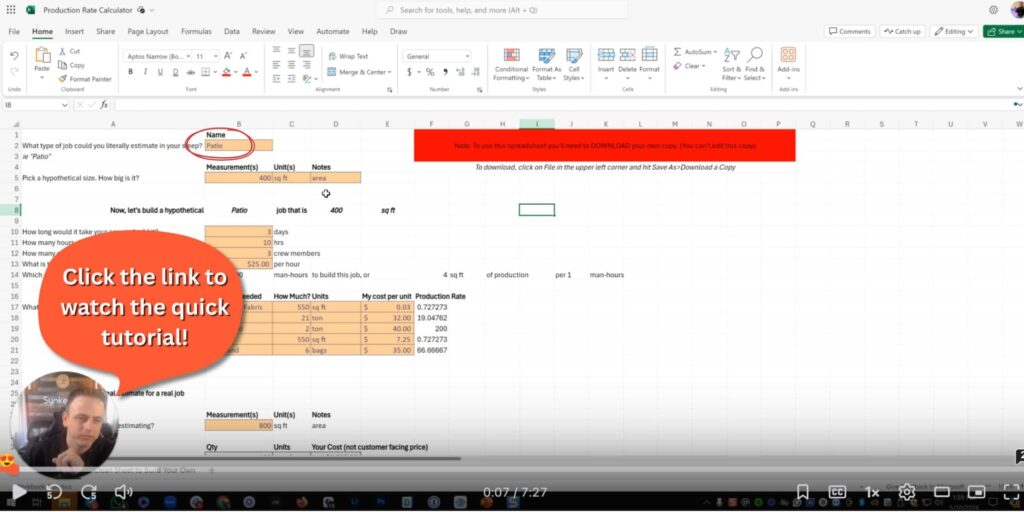
Mistake # 3: Not Having a Repeatable Estimating System
The Problem:
You price every job from scratch. Sometimes you use a spreadsheet. Other times, it’s just gut feel. Maybe your partner has their own method. It’s inconsistent, and you’re reinventing the wheel every time.
Most small businesses estimate with:
- Tribal knowledge
- Handwritten notes
- “This feels about right” math
That works….until the person who knows how to price everything goes on vacation. Or hires someone new. Or grows to the point where winging it just doesn’t cut it anymore.
You can’t rely on guesswork, mood, or memory. Best contractors build systems around estimation.
The Result:
Your estimates are all over the place. One job is profitable, the next one barely breaks even. You can’t train your team to help with estimates, and it’s impossible to scale your business because only you know how to price.Your profit depends on your memory.
“You don’t rise to the level of your goals. You fall to the level of your systems.” – James Clear
The Fix:
Build estimating templates paired with your production rates. Using a landscape crm allows you to save your proven templates for patios, planting jobs, lawn maintenance, and more.
Create a system that’s consistent and repeatable. When you build estimates off of production rates; how much you get done per man hour, or per unit, you can delegate estimating, train others, and quote faster with confidence.
Build templates for every common job you do, patios, maintenance packages, water features, cleanups, etc. Then assign production rates to each task. That way, anyone can build an estimate based on real job data, not gut instinct.
What a system includes
- Pre‑built templates in your estimating tools (or SynkedUP)
- Production rate metrics: e.g. square feet of paving per man‑hour, planting rate per hour, mulch spreading per hour etc.
- Real historical data: what past similar jobs actually took vs what was estimated
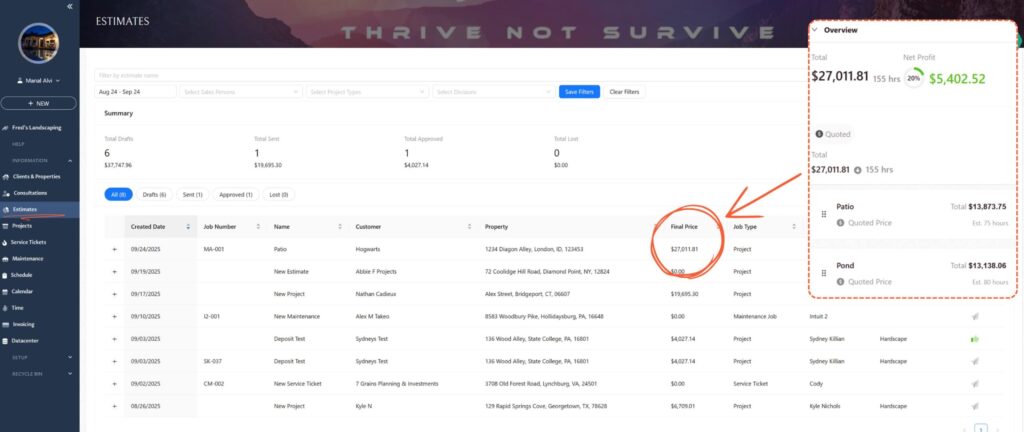
We offer a free Production Rate Calculator to create templates for patios, walls, mulch installs, you name it. Once you know it takes 0.25 hours to spread a yard of mulch, you can apply that across every job and stop guessing.
I go into more detail here about not having a repeating estimating system:
Final Sanity-Check Before You Submit Your Estimate
Here’s what your estimating workflow should look like step-by-step:
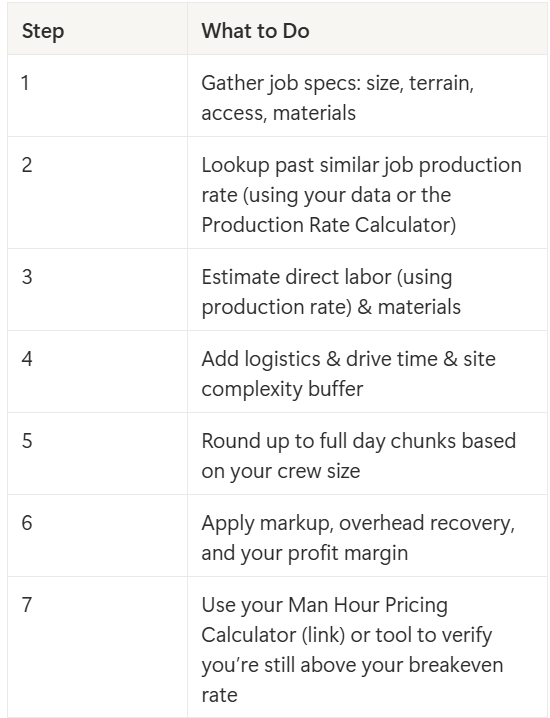
Final Word: Profit Isn’t Optional
Estimating labor well isn’t a “nice to have.” It’s the backbone of a profitable landscaping business.
Mistakes in estimating cost more than money; they cost sleep, stress, and stability.
When you build your estimate with full days, logistics, and systemized templates,you stop just “getting by” and start building something sustainable.
Next Steps
Want to stop losing money on misquoted jobs? Here’s what to do next:
- Download the Production Rate Calculator : Plug in your past jobs to discover your real rate per square foot or per man‑hour. Helps you avoid underbidding.
- Get the Man Hour Price Calculator : Use this when setting your hourly rate including overhead & profit. Ensures you never quote below breakeven.
- If you want help getting started, book a demo with SynkedUP.
We’ll show you how contractors across North America are:



Estimating isn’t just a numbers game. It’s the foundation of your entire business. Build it right, and the rest falls into place.

Weston Zimmerman
CEO and co-founder
See SynkedUP in action
Related Articles
The 3 Most Costly Estimating Mistakes Contractors Make (And How to Avoid Them)
Discover the 3 most costly estimating mistakes contractors make—and how to avoid them. Learn how production rates, logistics, and estimating...
The Ultimate Guide to Profitable Pricing for Landscape Contractors
Crews keep calling? They may not be a people problem; it might be your process. Here's how to fix it...
Choosing a Landscape CRM: The Features Every Contractor Needs
Crews keep calling? They may not be a people problem; it might be your process. Here's how to fix it...
How do you get your crews to perform like all stars?
Crews keep calling? They may not be a people problem; it might be your process. Here's how to fix it...
How To: Win More Jobs Without Marketing More
Want to win more jobs without spending more on marketing? The secret is in your old proposals. Here's how to...
The Power of Habit in Growing Your Business
Are your habits moving your business forward, or quietly holding you back? Small actions repeated daily are what really drives...
The Cost of: Scattered Focus
Cutting costs isn't the same as saving money. Learn how to use leverage, not panic, to drive real profit and...
Onsite vs. Offsite Time n Your Jobsites
On-site vs off-site crew time impacts more than productivity; it hits your profits. Learn to cut waste and boost margins...
Tips To: Improve Client Experience
Your sales process might not be broken; it might be overcomplicated. Here are 5 simple ways to improve client experience,...
What is the Most Difficult Challenge You’ve Overcome?
Business is tough. Growth is tougher. But if you're still standing, you're stronger than you think. Here's a reminder from...

